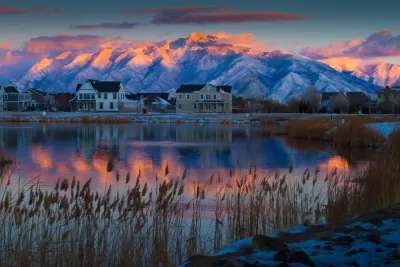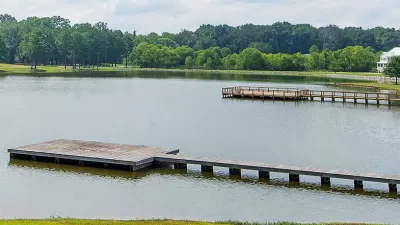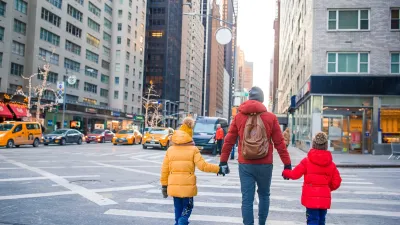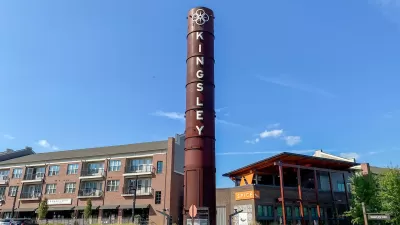Suburban dwellers are increasingly calling for more mixed-use development, walkability, and access to transit.

An article by Patrick T. Brown in Deseret News highlights the Utah community of Daybreak, which Brown argues can serve as a model for the more walkable, sustainable suburbs of the future.
“In July 2020, three-quarters of Americans told pollsters that being within walking distance of destinations like shops and parks were important to them, yet too many new developments still assume a car-dependent lifestyle.” Consequently, developers are starting to build denser, mixed-use suburbs in an effort to provide both more spacious living quarters and access to amenities.
“In contrast to restrictive zoning and land use restrictions that hinder development in many suburbs, Daybreak’s agreement with the city of South Jordan allows the developers to build housing at any density the market can support, with the potential of reaching 20,000 housing units over 4,200 acres.” Daybreak aims to offer housing at different price points and connects to the regional light rail system.
Brown argues that “The success of the Daybreak concept — using denser, traditional styles of development with amenities that attract families and keep housing costs affordable — should be one that spurs similar approaches throughout the country.” Like Paris Mayor Anne Hidalgo’s campaign to make Paris a 15-minute city, American mayors should, in Brown’s view, take an intentional approach to cultivate dense, walkable, developments that buck traditional suburban norms. As Brown writes, “Booming metro areas will appeal to families when homebuilders are allowed to create developments where community life can organically occur.”
FULL STORY: Perspective: Is the future of the suburbs in Utah’s Daybreak?

Planetizen Federal Action Tracker
A weekly monitor of how Trump’s orders and actions are impacting planners and planning in America.

Congressman Proposes Bill to Rename DC Metro “Trump Train”
The Make Autorail Great Again Act would withhold federal funding to the system until the Washington Metropolitan Area Transit Authority (WMATA), rebrands as the Washington Metropolitan Authority for Greater Access (WMAGA).

The Simple Legislative Tool Transforming Vacant Downtowns
In California, Michigan and Georgia, an easy win is bringing dollars — and delight — back to city centers.

The States Losing Rural Delivery Rooms at an Alarming Pace
In some states, as few as 9% of rural hospitals still deliver babies. As a result, rising pre-term births, no adequate pre-term care and "harrowing" close calls are a growing reality.

The Small South Asian Republic Going all in on EVs
Thanks to one simple policy change less than five years ago, 65% of new cars in this Himalayan country are now electric.

DC Backpedals on Bike Lane Protection, Swaps Barriers for Paint
Citing aesthetic concerns, the city is removing the concrete barriers and flexposts that once separated Arizona Avenue cyclists from motor vehicles.
Urban Design for Planners 1: Software Tools
This six-course series explores essential urban design concepts using open source software and equips planners with the tools they need to participate fully in the urban design process.
Planning for Universal Design
Learn the tools for implementing Universal Design in planning regulations.
Smith Gee Studio
City of Charlotte
City of Camden Redevelopment Agency
City of Astoria
Transportation Research & Education Center (TREC) at Portland State University
US High Speed Rail Association
City of Camden Redevelopment Agency
Municipality of Princeton (NJ)





























